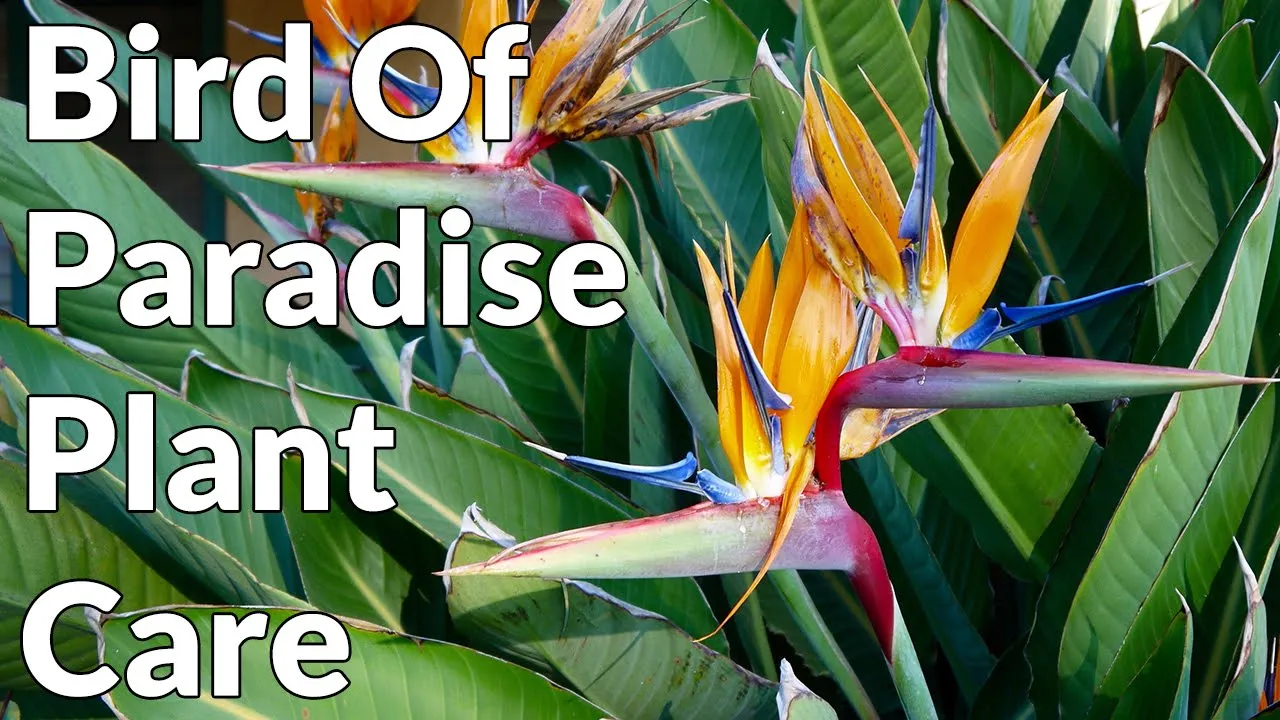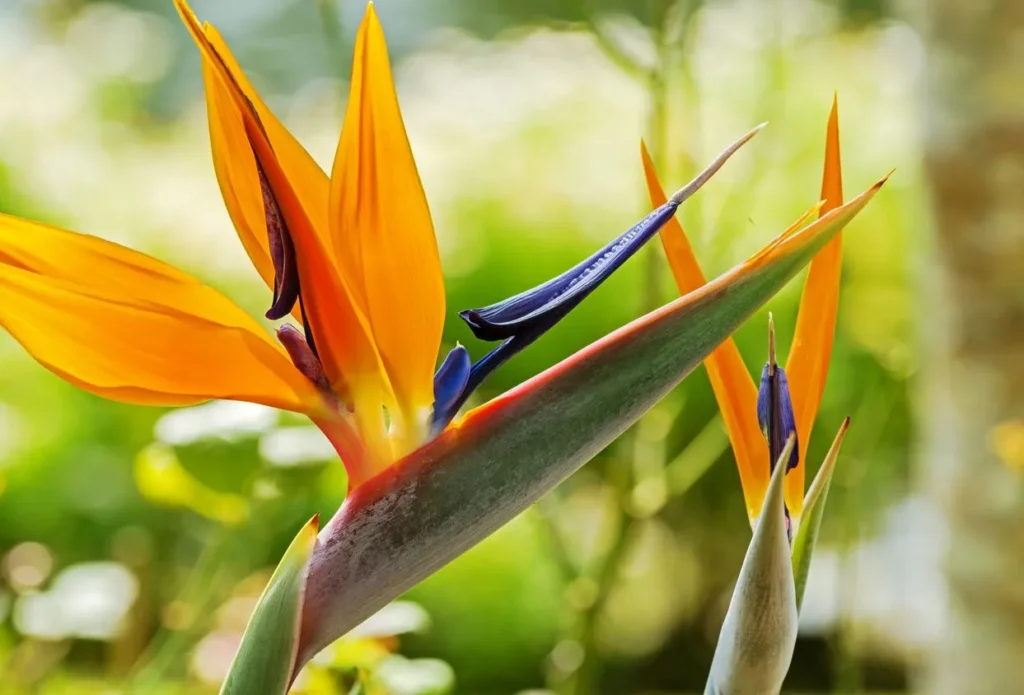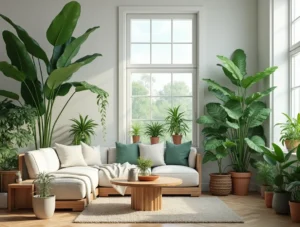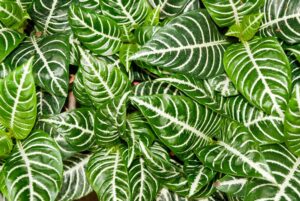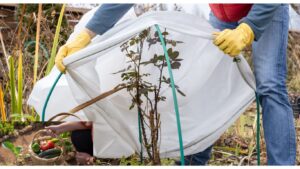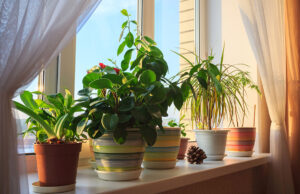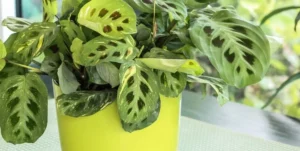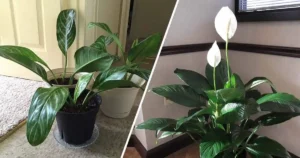Bird of Paradise plant care is essential if you want this tropical beauty to thrive in your home or garden. The Bird of Paradise plant (Strelitzia) is a showstopper with its striking, bird-like flowers and lush green leaves. However, taking care of one requires more than just placing it in a sunny spot. To ensure your plant thrives, you’ll need to balance sunlight, watering, and other essentials, whether it’s grown indoors or outdoors.
In this guide, we’ll break down all aspects of how to care for a Bird of Paradise, fusing expert advice from various sources, including The Sill and my own experience, to help you provide the best care for this stunning plant.
Bird of Paradise Plant Care:
On This Page
Bird of Paradise sunlight needs
The Bird of Paradise is a sun-loving plant, but that doesn’t mean it can handle scorching rays all day. Here’s the key to getting the sunlight just right:
- Bright Indirect Light Indoors: According to The Sill, the Bird of Paradise thrives in bright, indirect sunlight indoors. A south-facing or east-facing window works wonders for providing the light it needs without the risk of burning its leaves.
- Outdoor Placement: If you’re growing it outdoors, find a spot that gets direct sunlight in the morning but where it can enjoy some shade during the hot afternoon hours. This balances its need for sun without overexposure.
- Signs It Needs More Light: If your Bird of Paradise plant’s growth has slowed or its leaves look a little sad and droopy, it’s likely asking for more light. Consider moving it closer to a bright window or supplementing with a grow light if necessary.
Fun Fact: Did you know that indoor Birds of Paradise often don’t bloom due to insufficient light? To encourage blooming, try providing as much natural light as possible.
Watering Bird of Paradise
Proper watering is crucial to keeping your Bird of Paradise happy. Here’s the trick to avoiding water stress:
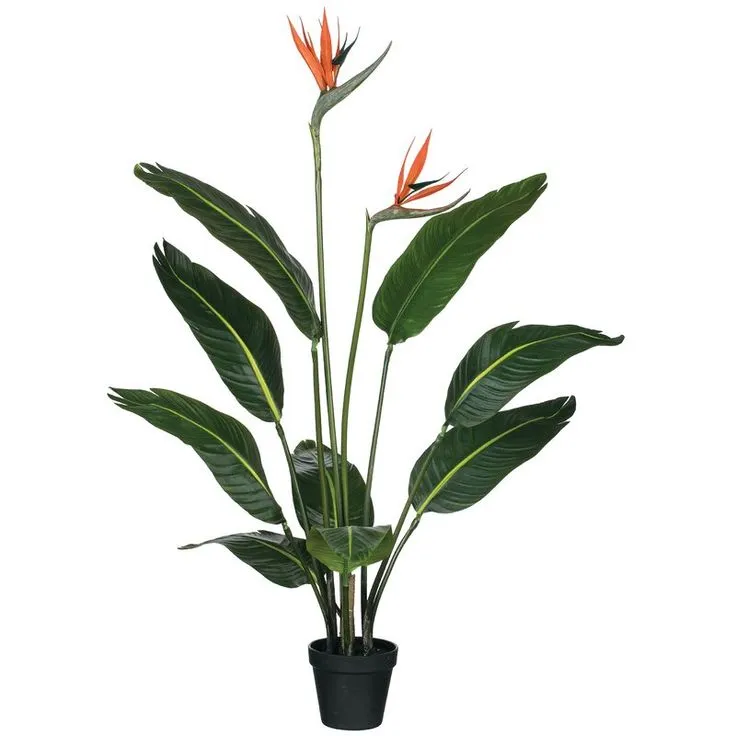
- Deep Watering: Water thoroughly, making sure the water drains out of the pot. The sill emphasizes letting the top 1-2 inches of soil dry out between waterings, which helps prevent root rot.
- Seasonal Changes: Adjust your watering frequency with the seasons. In the growing months (spring and summer), your plant will be thirstier and may need watering once a week. During the dormant months (fall and winter), scale back to every two to three weeks, when the plant’s growth slows.
- Pot with Good Drainage: Like most houseplants, Birds of Paradise don’t like sitting in water. Make sure your pot has drainage holes, and never let the plant sit in water-filled saucers.
Water Tip: When in doubt, it’s better to go underwater than overwater your Bird of Paradise. Root rot from soggy soil is a more common issue than underwatering.
Soil and Potting: Well-Draining Mix Is Essential
Bird of Paradise plants love rich, well-draining soil, which supports both their fast growth and moisture needs.
- Best Potting Mix: The Sill suggests using a quality potting mix that includes perlite or sand to aid in drainage. An all-purpose tropical plant soil or cactus mix with a bit of added organic matter, like peat, will keep the soil light and airy.
- Repotting: Birds of Paradise grow quickly and need room for their roots to expand. Plan to repot your plant every 1-2 years, especially if you see roots poking out of the drainage holes. When repotting, choose a container that is only slightly larger—around 1-2 inches bigger in diameter.
Pro Tip: Repotting also gives you the chance to refresh the soil, which helps deliver fresh nutrients and prevents the plant from becoming root-bound.
Humidity and Temperature: Mimic the Tropics
As a tropical plant, your Bird of Paradise will feel right at home in warm, humid conditions.
- Humidity: The Sill mentions that Birds of Paradise tolerate average indoor humidity but thrive in higher humidity levels. Aim for around 50-60% humidity. You can boost humidity by misting the plant occasionally, using a humidifier, or placing a tray of water near the plant.
- Temperature: These plants prefer warm, stable temperatures, ideally between 65-85°F (18-29°C). Keep them away from cold drafts or air conditioning vents, especially during the winter months.
Humidity Hack: If your Bird of Paradise has brown edges on its leaves, it could be a sign that the air is too dry. A simple humidifier or pebble tray can help fix that issue.
Fertilizing: Boost Growth with Nutrients
To help your Bird of Paradise reach its full potential, feeding it during the growing season is essential.
- Feeding Routine: Feed your plant with a balanced liquid fertilizer (20-20-20) every 2-4 weeks during the growing season (spring and summer). This helps support its rapid growth and keeps the leaves lush and green.
- Winter Care: When the weather cools down and the plant’s growth slows, you can skip fertilizing until spring returns.
Pruning and Maintenance: Keep It Tidy
Pruning isn’t just for aesthetic reasons; it’s vital for the plant’s health.
- Removing Dead Leaves: The Sill advises cutting away any damaged or yellowing leaves at the base. This encourages new growth and keeps the plant looking vibrant.
- Leaf Care: Dust tends to collect on the large leaves, reducing their ability to absorb light. Wipe them down every few weeks with a damp cloth to keep them clean and shiny.
Quick Tip: Don’t prune too aggressively. Birds of Paradise grow slowly, so you’ll want to maintain as many healthy leaves as possible to support their growth.
Common Problems and Solutions
Even with the best care, Birds of Paradise can experience some issues. Here’s how to troubleshoot:
- Yellow Leaves: This is often a sign of overwatering. Make sure the soil is drying out between waterings and that your pot has proper drainage.
- Brown Edges: Low humidity or underwatering can cause the tips of the leaves to turn brown and crispy. Increase your watering slightly and consider boosting humidity levels.
- No Blooms: Indoors, it can be tough to get a Bird of Paradise to bloom. It often requires lots of bright light and patience, as these plants can take 3-5 years (sometimes longer) to mature and flower.
Plant Doctor Tip: If pests like spider mites or mealybugs show up, wipe the leaves with a damp cloth and use neem oil or insecticidal soap to treat the infestation.
Can I grow a bird of paradise indoors?
Yes! With sufficient sunlight, humidity, and proper care, your Bird of Paradise can thrive indoors, though it may take several years to bloom.
How often should I water my Bird of Paradise?
Water when the top 1-2 inches of soil are dry. In the summer, this could mean once a week, but in winter, water less frequently (every 2-3 weeks).
Do Birds of Paradise need direct sunlight?
Outdoors, they enjoy direct sunlight in the morning but should be protected from harsh afternoon rays. Indoors, bright indirect light is best.
How do I make my Bird of Paradise bloom?
To encourage blooming, ensure your plant gets as much bright light as possible. Outdoor-grown plants tend to bloom more frequently than indoor ones.
